Article & Photos By David Yadock
Dry Gulch & Western, Update 1
Wondering what has changed or been modified on the Dry Gulch & Western railroad? As mentioned earlier, I have been working on several locomotive projects to provide a varied locomotive roster when conducting operating sessions. Before showing the changes to the layout I’ll show you some of the locomotive projects. I have decided to re-motor and install sound decoders in some of my locomotive collection. I have had several locomotives waiting a long time to roam the rails of my basement empire. My logging locomotive fleet originally had several Bachmann locomotives. Unfortunately, Bachmann’s quality control and availability of replacement parts relegated many of these great looking locomotives to the bone yard. I needed to rebuild that fleet with some more dependable locomotives.
Photos 1 and 2 show the first locomotive I tackled. It is a PFM 2-truck Pacific Coast Shay. It had a new motor and driveline installed. I also installed micro LEDs to the headlight and backup light. To dim down the harsh white color of the LEDs I coated them with transparent orange paint. A flicker firebox light was also installed. A SoundTraxx TSU-750 sound decoder with a Keep Alive capacitor system was used for the locomotive control. I used a sugar cube speaker for sound. This locomotive came painted and numbered, I only needed to add my railroads name to the sides.
In photo 3 is a view of my PFM 2-truck Climax locomotive. This was one of two “basket case” Ebay purchases. This one had many things broken or damaged, such as, a broken universal joint that I had to manufacture out of flat brass and brass square tubing. It also had been left against some of the original foam padding from the PFM box. That foam had deteriorated and stuck to one side of the locomotive’s paint. It had to be thoroughly cleaned and buffed prior to painting.
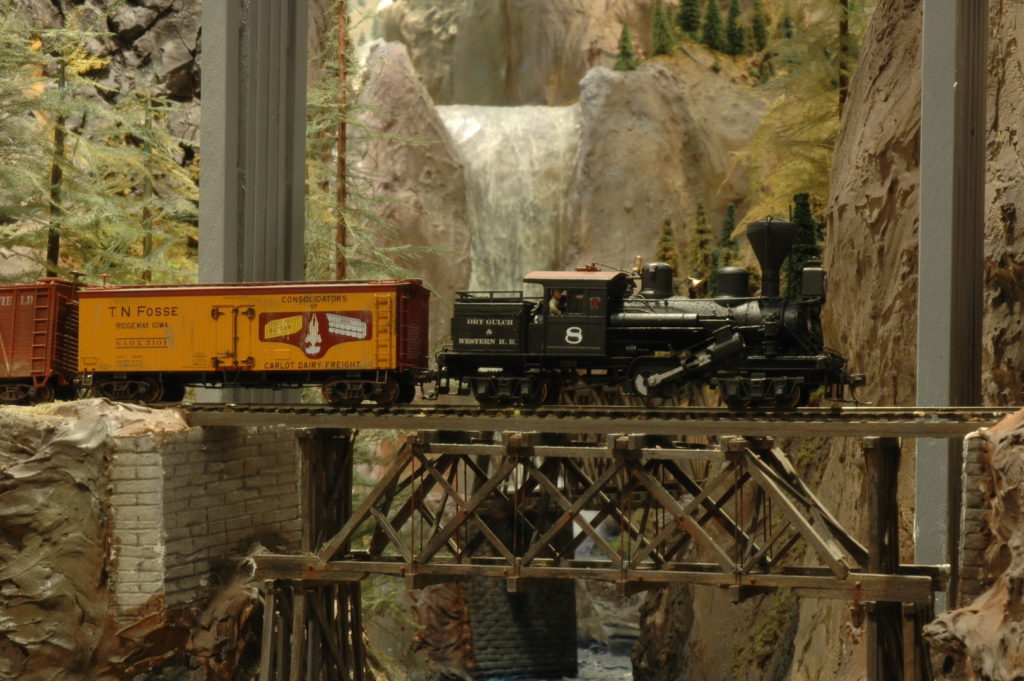
The next locomotive shown in Photo 4, is a 3-truck Climax. It was the other Ebay “basket case” purchase. The locomotive had driveline deficiencies that didn’t allow it to run at all. The entire drive mechanism from the wheels to the motor had seized. The only thing I can think is it was stored for a long time in a damp location. The entire drive mechanism had to be taken apart. Once apart, the gearing was cleaned and polished. When it was all back together and lubed it now runs very well. Many hours were spent on the gentle cleaning process to bring this locomotive back to life. Both Climax locomotives had the same things done to them as the Shay mentioned above (re-motor, flicker firebox light, micro LED lighting, Keep Alive capacitor system). The only difference is that I used SoundTraxx Tsunami-2 decoders in these locomotives.
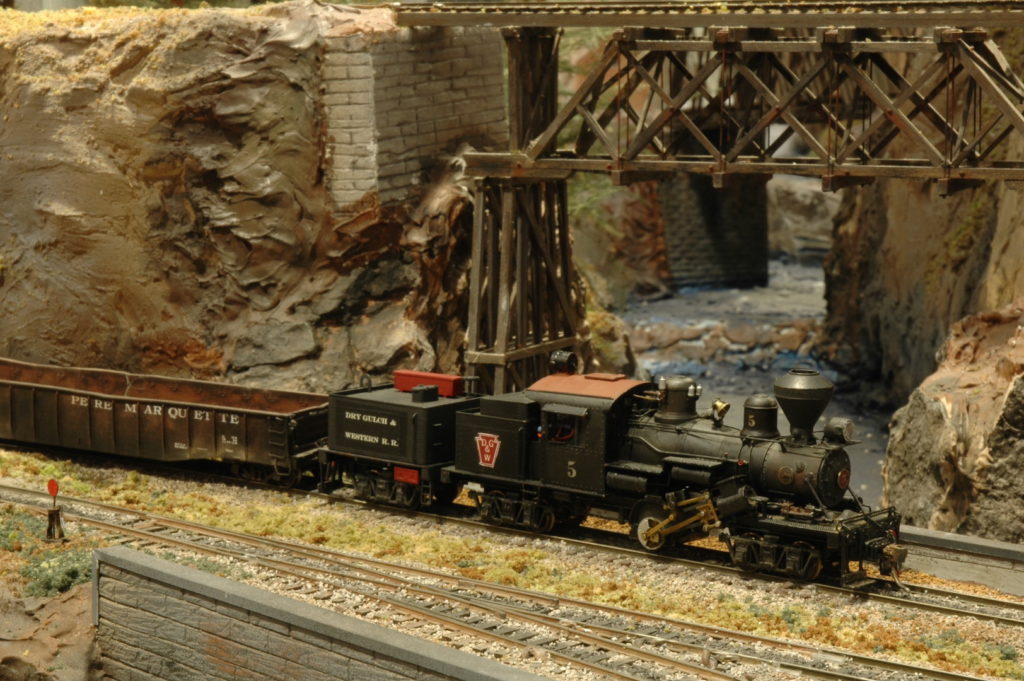
Photo 5 shows another PFM 2-truck Climax. This locomotive was a breeze to work on. It was another Ebay purchase but was all intact and complete. I did notice that it did not have a backup light on the model, so I built the light out of brass tubing. To complete the backup light detail, I added several small pieces of brass for hinges and latches. It was then added it to the top of the cab. Yes, this locomotive received the same sound system and electrical details as the other two Climax locomotives already mentioned.
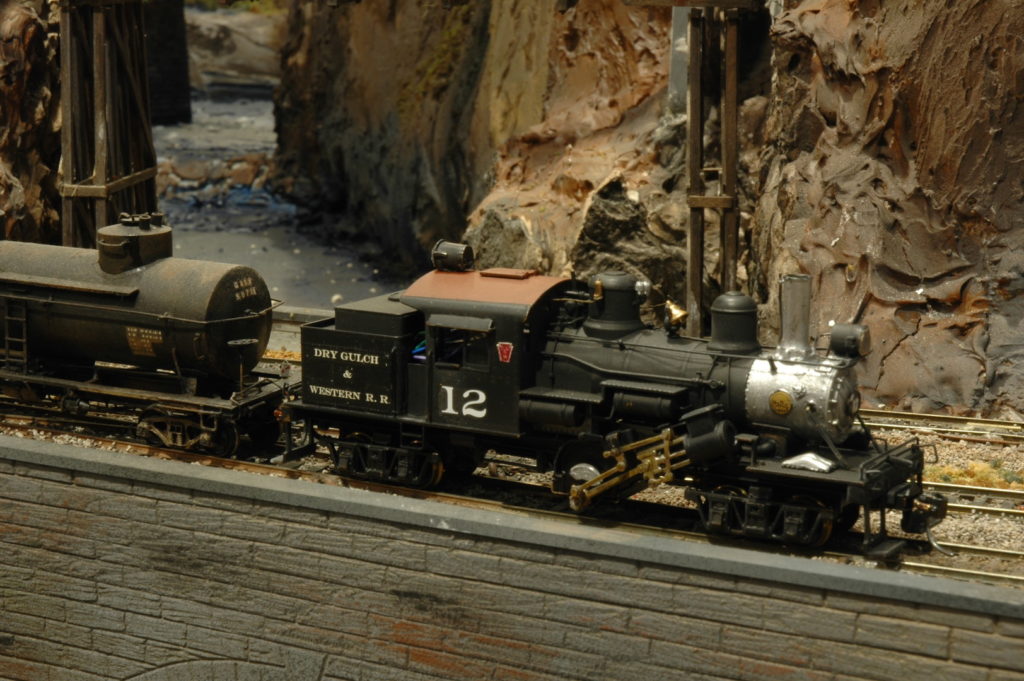
Photo 6 is yet another PFM 2-truck Climax. This one was a swap meet purchase. At first glance it looked like a great model but when I began my teardown to replace the motor several issues came up. The main shaft from the upper driveline to the lower drive assembly was bent. I’m not sure how the previous owner bent that shaft! This caused the locomotive to lurch when power was applied. I have attempted to straighten the shaft as best as I could, but the lurch remains. Luckily the lurch is slight, and it is oddly only in the reverse direction. I decided that I would continue with the project to completion and be on the lookout for a replacement drive mechanism for this locomotive. This locomotive had other damaged items that I was able to repair. It also received the same sound and detail treatment as the other locomotives. The Dry Gulch & Western now has a sizeable fleet of logging locomotives but I still have a couple PFM Heislers and two PFM Shays to add to the roster. Eventually they will all have sound decoders and such added to them. No, not all these locomotives will be on the layout at the same time but will be rotated. That will give the layout operators some variety in motive power.
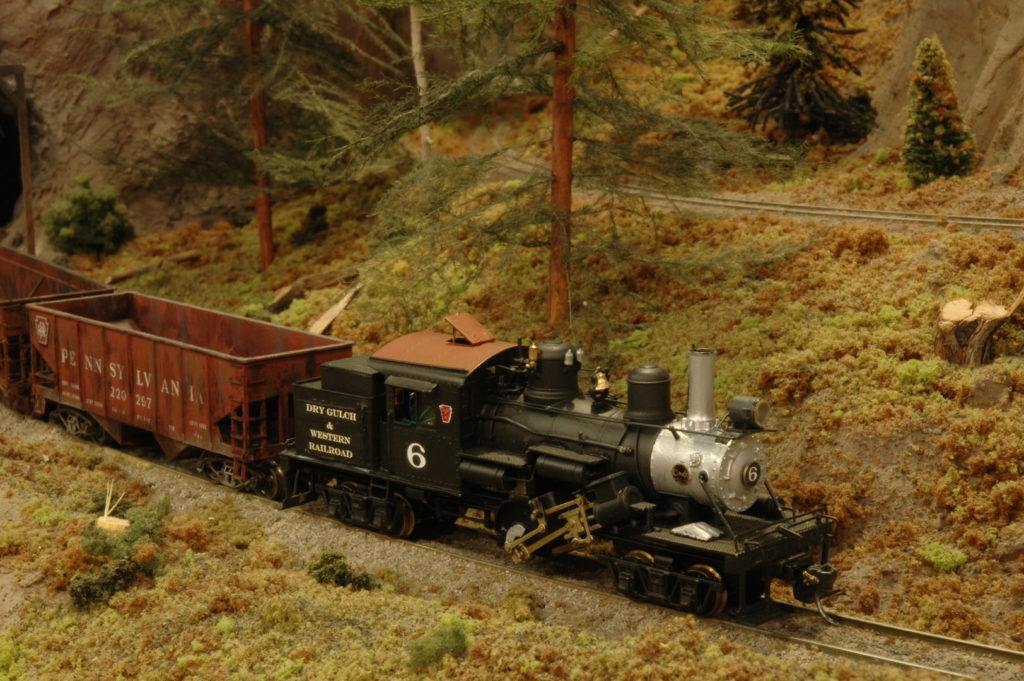
Next time I’ll show some of the modified rod locomotives that I have been working on.
David

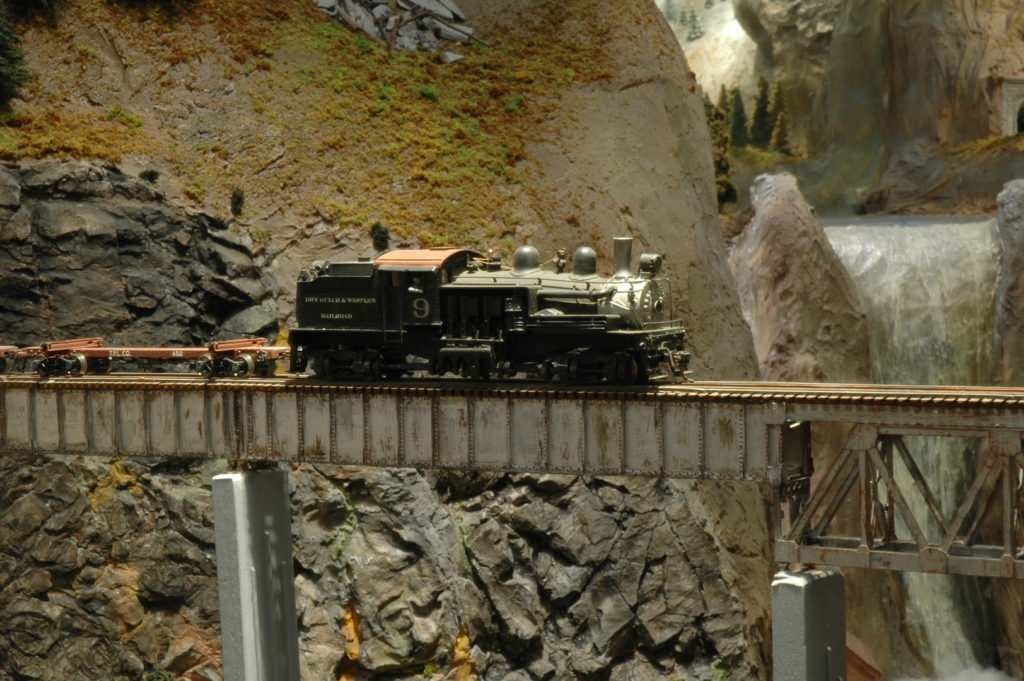
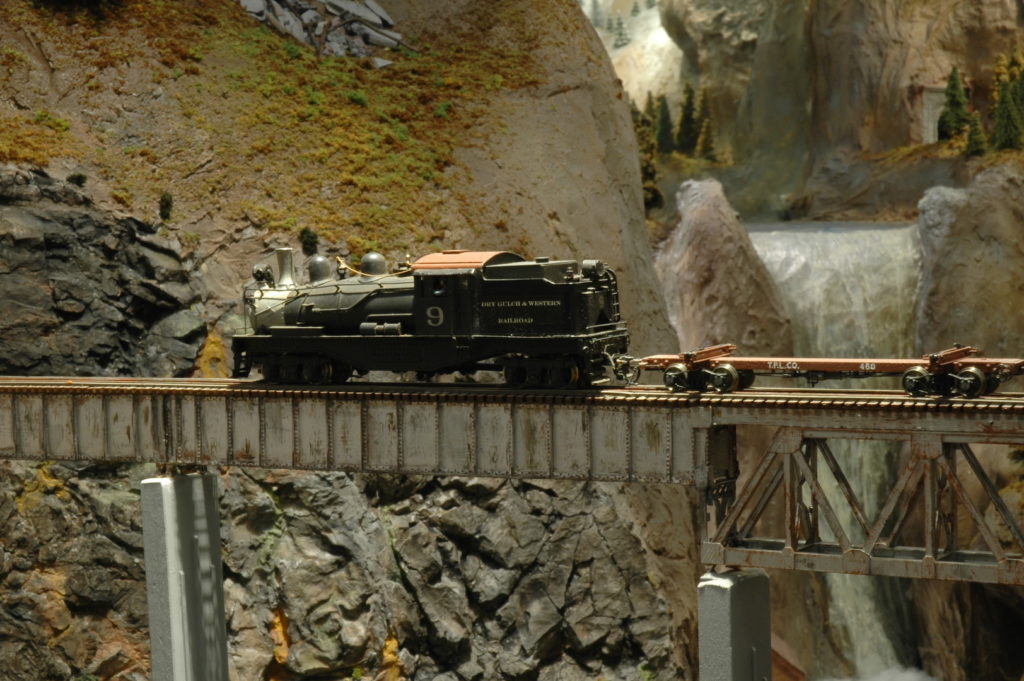
I enjoyed looking at your restored logging engines. In my earlier days i.e. my dream years I began to collect PFM logging engines, but my dream never came to fruition. Might you be interested in acquiring any more PFM logging engines?
Great work!